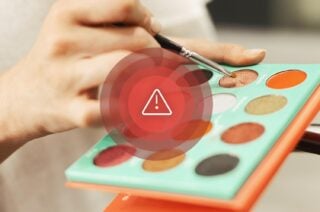
In recent months, news of asbestos-contaminated makeup has become more commonplace. Big-name brands like Claire’s have recently come under fire for asbestos found in their makeup products. Many of these contaminated products were marketed to youth, potentially exposing children and teens to asbestos.
On September 6, 2019, the U.S. Food and Drug Administration (FDA) issued a recall for several makeup products produced by the brand Beauty Plus Global. This is not the first time asbestos has been found in the brand’s makeup.
In June, the company’s Contour Effects Palette 2 was recalled. Claire’s JoJo Siwa collaboration palette was also recalled at this time. Both products contained asbestos.
Four Beauty Plus Global Products Test Positive for Asbestos
Beauty Plus Global is a large cosmetics and packaging manufacturer. It produces products under multiple brand names including, Beauty Plus Global, City Color, Girls of City Color and Max Mell. The company’s cosmetics span numerous products, including eye shadow, bronzer and face powder. Additionally, the City Color palettes are specifically marketed to young teens.
This latest recall found the following Beauty Plus Global Inc. products to contain asbestos:
- Beauty Plus Global Inc. City Color Collection Matte Blush (Fuchsia), SKU #849136008807, Lot No. 1605020/PD-840
- Beauty Plus Global Inc. City Color Cosmetics Timeless Beauty Palette, SKU #849136012958, Lot No. 1510068/PD-C864R
- Beauty Plus Global Inc. City Color Bronzer (Sunset), SKU #849136016017, Lot No. 160634/PD-P712M
- Beauty Plus Global Inc. City Color Shimmer Bronzer (Caramel), SKU #849136017106, Lot No. 1612112/PD-840
According to the company’s website, its beauty products are distributed to more than 100 countries. They can be found at various large retailers, such as Target, Walmart and Amazon. The company has various factories in China and across the globe.
To avoid asbestos exposure, consumers who bought these products should discontinue use and dispose of them immediately. No amount of exposure to asbestos fibers is safe. Asbestos exposure can lead to several types of cancer, including mesothelioma and lung cancer.
Cosmetic Testing in China
Cosmetics in China are tested by the National Medical Products Administration (NMPA), formerly known as the China Food and Drug Administration.
Makeup products, such as the contaminated Beauty Plus products, fall under the administration’s non-special use cosmetics category. Products in this category undergo strict testing.
Despite such testing, the U.S. FDA ordered a recall on the four Beauty Plus Global products because of asbestos in the cosmetics.
FDA Puts Larger Focus on Cosmetics Testing
In recent years, contaminated talc has become a growing concern. In 2017, testing found asbestos in makeup products sold by Claire’s and Justice. These products were marketed directly to children and teens.
Advocates are calling for more governance of the cosmetics industry. Following the March 2019 recall of contaminated Claire’s makeup, the FDA released a statement. The agency announced new steps it will take to protect consumers, including:
- The FDA will investigate where cosmetic companies source their talc from.
- The FDA will investigate how raw talc or finished products are tested for safety.
- The FDA will investigate brands that have used talc and reported adverse effects related to these products.
- The FDA will work with an interagency working group to draft new standards to improve the consistency of talc safety testing.
Additionally, the agency does not have the authority to require brands to register products. However, it can ask manufacturers to voluntarily register products with a clear list of ingredients to an FDA database.
These steps aim to protect consumers and give the FDA better oversight over the cosmetics industry. Until the FDA releases further information about its plans for regulating the industry, consumers should carefully read the ingredient lists for beauty products in their homes and on store shelves.




